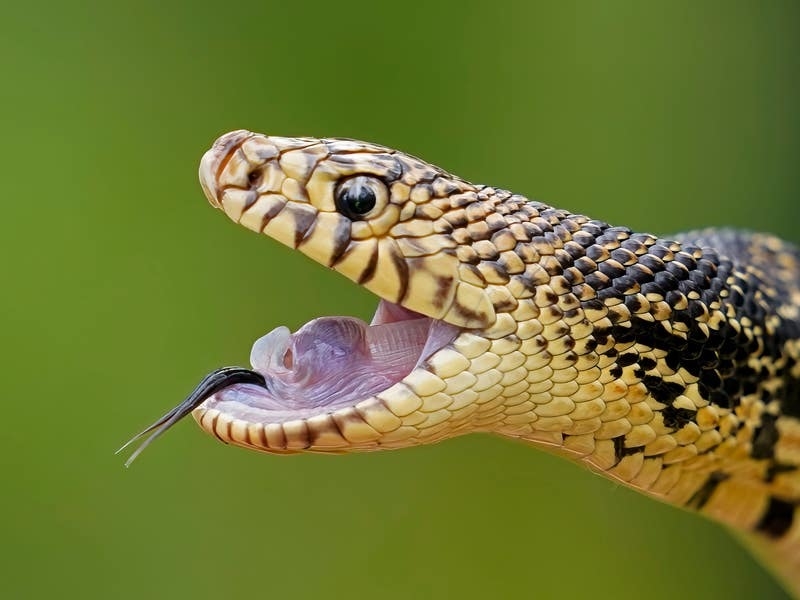In what has become an annual conservation event in the US state, young Louisiana pine snakes that were bred in captivity have been released in Kisatchie National Forest.
Five snakes from the Memphis Zoo were released in early May, with more from other zoos to be released as the year progresses.
The Louisiana pine snake is considered a threatened species, and its habitat has been diminishing for decades.
But experts say the Kisatchie forest has the right habitat for the snakes to thrive.

The five pine snakes bred at the Memphis Zoo in Tennessee were released into the Kisatchie in early May as part of an ongoing conservation effort involving zoos in Memphis, New Orleans and two Texas cities, Fort Worth and Lufkin.
This year, more than 100 pine snakes – a species the federal government lists as threatened – will be released into the central Louisiana forest.
Steve Reichling, the Memphis Zoo’s director of conservation and research, said: “We provide the snakes in our snake factories, which are funded by the US Forest Service, into habitat that the Fish and Wildlife Service and Forest Service have developed.
“It’s just a perfect marriage, really.”

The forest is also home to gophers that are both a food source for the snakes and the creators of the burrow system where the snakes live and hibernate.
“Unlike some of the other snakes that are here that can survive in different habitats, Louisiana pines, they cannot,” Mr Reichling said as the snakes were being released.
Although they bear a resemblance to rattlesnakes, pine snakes are non-venomous constrictors and are not considered dangerous to humans.

The release into the Kisatchie of juvenile pine snakes raised at the Memphis Zoo has become an annual event, one that Emlyn Smith, a biologist with the forest service, looks forward to.
“I love this,” she said. “This is why I haven’t retired yet, because I love this project and it’s just so exciting.
“Every time I come out here, there’s the potential to see a pine snake that we released and to see that it’s surviving and it’s thriving and it’s making babies and it’s getting bigger.”






